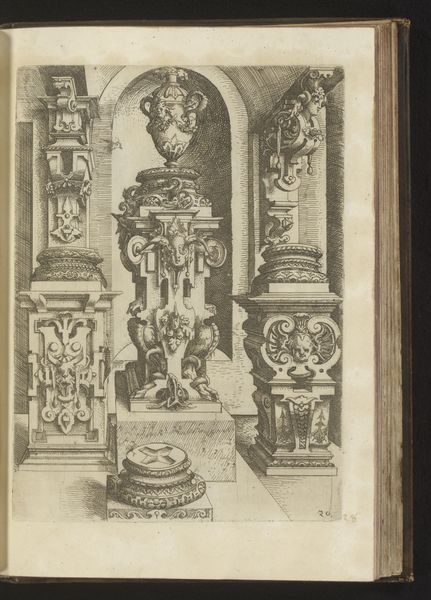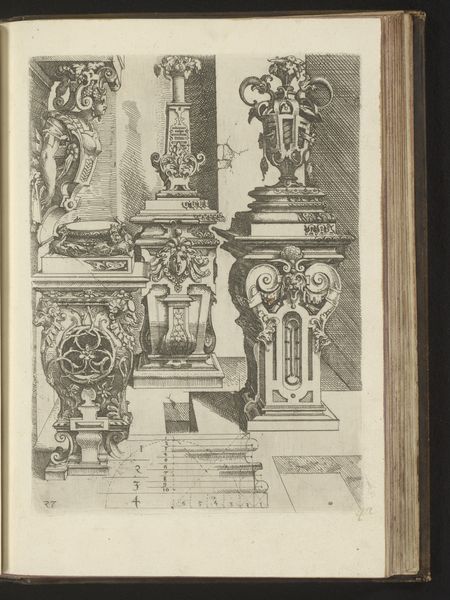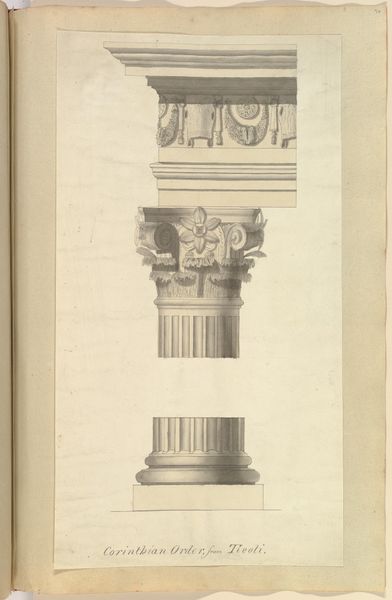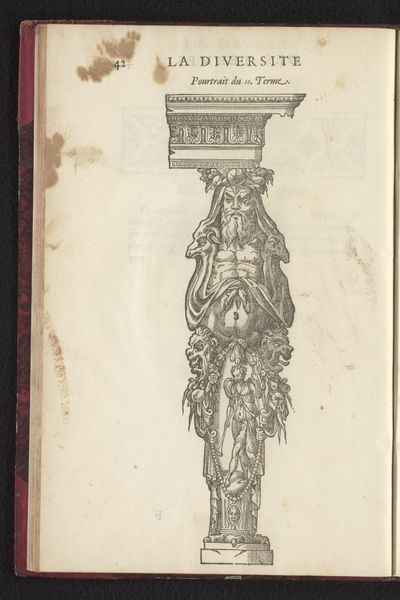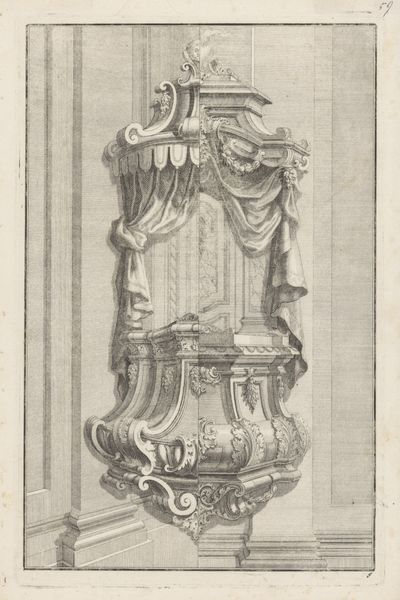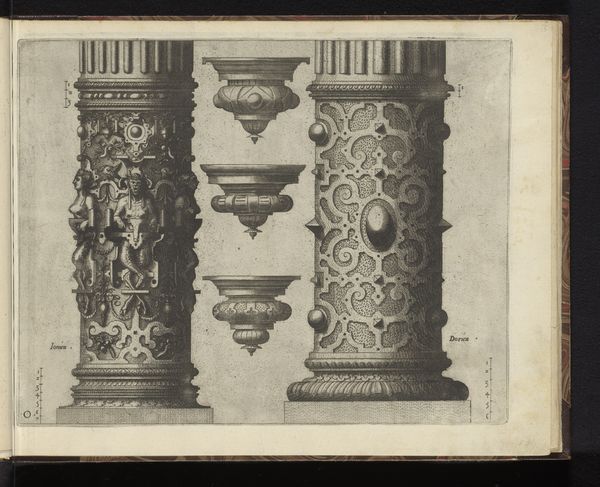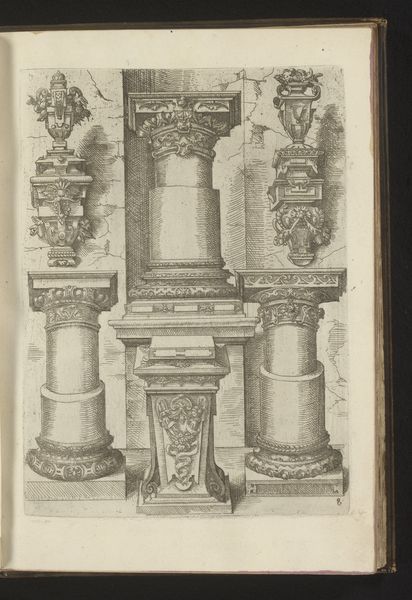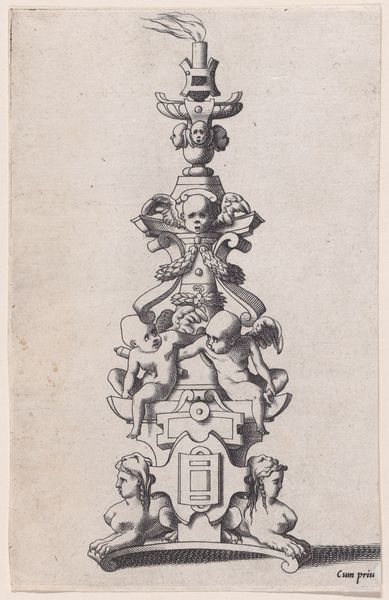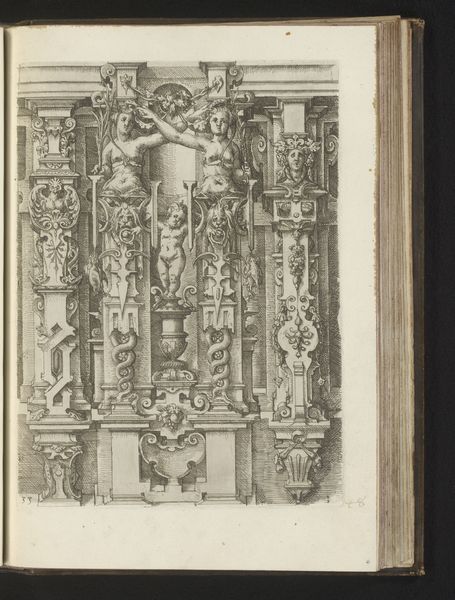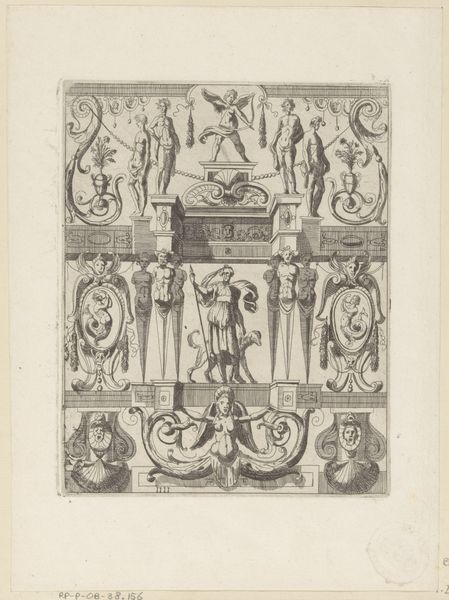
drawing, paper, ink, sculpture, pencil, engraving
#
drawing
#
baroque
#
pencil sketch
#
paper
#
form
#
ink
#
coloured pencil
#
sculpture
#
pen-ink sketch
#
pencil
#
line
#
watercolour illustration
#
history-painting
#
engraving
#
realism
Dimensions: height 404 mm, width 238 mm
Copyright: Rijks Museum: Open Domain
Curator: Look at this compelling drawing, "Standbeeld van de godin van de vruchtbaarheid," or "Statue of the Goddess of Fertility," created between 1636 and 1647. It currently resides in the Rijksmuseum. Editor: My first thought is "ornate." There's so much happening here – a veritable menagerie of figures, seemingly fighting for space! Curator: Indeed! Johann Friedrich Greuter, the artist, uses ink, pencil, and perhaps a touch of color to depict a statue just brimming with symbolic intent. Notice how the goddess figure is adorned with fruit; how do you interpret that? Editor: To me, it immediately signals abundance. It's a direct, visual link to her role as a fertility figure. Grapes and other fruits have long held associations with both pleasure and the harvest, important elements in a society dependent on agriculture. How does that align with historical context? Curator: Precisely. Consider that the 17th century, even amidst artistic flourishing, faced realities of high infant mortality and reliance on agricultural yield. Visualizing a deity promising fecundity holds significant cultural weight. Editor: I'm also struck by the pedestal; the base crowded with hybrid beasts, evoking something ancient. What historical or artistic precedents may have informed its construction? Curator: Classicism would definitely be one—the emphasis on the idealized form of the human body, the careful attention to drapery. Furthermore, during the Baroque period, allegorical representation reached a new height, becoming increasingly bombastic and complex. That energy is captured so clearly. Editor: Yes, complex indeed! So much dynamism crammed onto this pedestal; you have creatures biting each other, a real sense of struggle, then the tranquil almost stoic-like face of the goddess on top. A clear juxtaposition to the lower part of the artwork. Curator: Ultimately, this statue embodies humanity’s persistent desires and aspirations: safety, plenty, continuity… represented with astonishing artistry. Editor: Yes, quite a powerful drawing that reminds us that, while tastes may evolve, these primal concerns resonate even now.
Comments
No comments
Be the first to comment and join the conversation on the ultimate creative platform.
